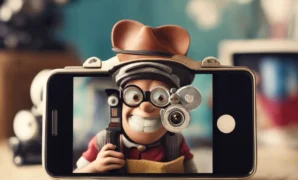In the ever-evolving world of animated films, 3D computer animation has emerged as a groundbreaking technique that has transformed the […]
Category: Animated Films
Animated Films: A Colorful Journey Through Cinema
Animated films have captivated audiences for over a century, evolving from simple hand-drawn sketches to complex digital masterpieces. This article explores the rich world of animated cinema, its history, techniques, and impact on popular culture.
What are Animated Films?
Animated films are motion pictures created by stringing together a series of still images to create the illusion of movement. Unlike live-action films, every frame in an animated movie is artificially created, allowing filmmakers to bring imagination to life in ways impossible with traditional cinematography.
A Brief History of Animation
- Early Days: Animation began in the late 19th century with devices like the zoetrope and flip books.
- Golden Age: Disney’s “Snow White and the Seven Dwarfs” (1937) ushered in the golden age of hand-drawn animation.
- Television Era: The 1960s saw a boom in TV animation with shows like “The Flintstones.”
- Renaissance: The late 1980s and 1990s saw a resurgence in animated features with films like “The Little Mermaid” and “Beauty and the Beast.”
- Digital Revolution: Pixar’s “Toy Story” (1995) launched the era of computer-animated films.
Animation Techniques
- 2D Animation: Traditional hand-drawn or computer-assisted animation.
- 3D Computer Animation: Creating and animating digital 3D models.
- Stop Motion: Physically manipulating objects and photographing them frame-by-frame.
- Rotoscoping: Tracing over live-action footage to create animated sequences.
Major Animation Studios
- Walt Disney Animation Studios: Pioneers of feature-length animation.
- Pixar Animation Studios: Revolutionized the industry with CGI animation.
- DreamWorks Animation: Known for franchises like “Shrek” and “How to Train Your Dragon.”
- Studio Ghibli: Japanese studio famous for its beautiful hand-drawn animations.
Notable Animated Film Directors
- Hayao Miyazaki (“Spirited Away,” “My Neighbor Totoro”)
- Brad Bird (“The Incredibles,” “Ratatouille”)
- Pete Docter (“Up,” “Inside Out”)
- Mamoru Hosoda (“Summer Wars,” “Wolf Children”)
The Art of Voice Acting
Voice acting is crucial in bringing animated characters to life. Many celebrities lend their voices to animated films, while some voice actors, like Mel Blanc (the voice of Bugs Bunny), become legends in their own right.
Music in Animated Films
Soundtracks play a vital role in animated movies. Disney’s musical animations, with songs like “Let It Go” from “Frozen,” have become cultural phenomena.
Animation Across Cultures
While American and Japanese animations dominate globally, many countries have thriving animation industries, each with unique styles and storytelling traditions.
Impact on Popular Culture
Animated films have a profound impact on popular culture, influencing fashion, toys, theme parks, and even language. Characters like Mickey Mouse and Buzz Lightyear have become global icons.
The Future of Animation
As technology advances, we’re seeing new frontiers in animation:
- Virtual Reality (VR) and Augmented Reality (AR) animations
- AI-assisted animation tools
- Photorealistic CGI blurring the lines between animation and live-action
Animated films continue to push the boundaries of storytelling and visual art. From heartwarming tales for children to thought-provoking narratives for adults, animation remains a vibrant and essential part of cinema, constantly evolving and inspiring audiences worldwide.
